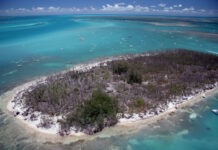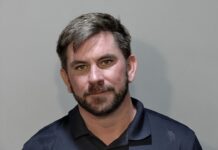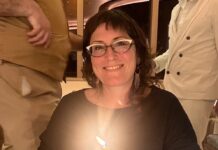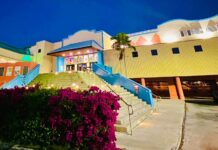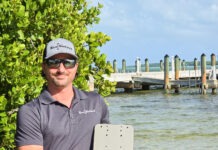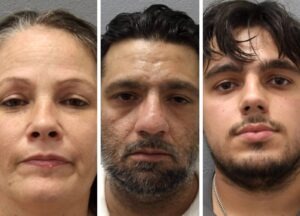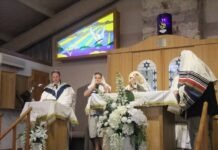By Em Cosgrove
It was a serendipitous encounter. I was at church one Sunday morning during my month-long stay in Key Largo when I met marine biologist Jack Grove, who had written an entire book about Galápagos fish.
A marine biology student myself, I was thrilled to speak with him, even more so when I found out about his plans to team up with two pastors, David Charlton of Burton Memorial United Methodist Church and Bruce Havens of Coral Isles Church this coming Earth Day to deliver the message that it is time to play our parts in restoring the Earth.
Grove will give a presentation, “An Appeal to Save Life on Earth, In the Footsteps of E.O. Wilson,” at 7 p.m. at Burton Memorial United Methodist Church on Earth Day, Tuesday, April 22. On Sunday, April 27, Charlton and Havens will deliver sermons at their respective churches at 10 a.m., with the option to attend on Facebook, followed by an afternoon of Earth Day festivities from noon to 3 p.m. at Coral Isles Church.
I was already well aware of the urgent need for action during this time of ecological collapse, but it struck me that these plans were highly abnormal. Leaders of Christianity and a scientist — working together?
The science and Christian communities have been in dispute for centuries. Desiring to know why a bridge was being built across this historical chasm, I talked to each party. I was surprised to discover that Christians and scientists are not as at odds as they seem; rather, they are complementary and in desperate need of each other.
First and foremost, intrinsic to both science and Christianity is a clear calling for stewardship of the Earth. As humans, we find ourselves in a unique relationship with the rest of the species on this planet. We have the ability to determine whether they are fated to thrive or go extinct. We must question what is to be done with such a pivotal position. Christianity and science give similar answers.
Science recognizes that everything we do to the planet affects the biodiversity of life and, consequently, the wellbeing of humanity. It maintains that in order to preserve life on Earth, we must learn about the world we live in, understand how we can sustain it and act accordingly.
Similarly, Christianity affirms that we are placed in a caretaker role in relation to the Earth. Christians are called to act in the image of a God who cares for the Earth, God’s creation. It necessitates a duty to be nurturing towards that creation. One can also refer to the biblical command for human “dominion,” a word that, while commonly misunderstood to mean that followers of God can trample on the Earth as if it is theirs and not their God’s, orders responsibility.
“Dominion is more about having responsibility. … That’s why we feel that we need to celebrate Earth Day: to remember that God gives us responsibility for the Earth to take care of it,” Charlton said.
There are beliefs about our world that scientists and people of faith might never agree on. Grove, Charlton and Havens all emphasized that this is okay. It should not stop the two communities from coming together under the fundamental commonality that we both find ourselves in a position of responsibility to care for life on Earth.
Science requires collaboration and faith. Havens said it’s about “working with, not against, others.” Grove said science and religion must not be confused with one another, but at the same time, “we must determine how faith and science can work together as a singular force for good.”
Scientists can guide us with their expertise in how to go about restoring the Earth, and people of faith can inspire action with their virtue, passion for love and justice, and grounded affinity for hope. Charlton believes if the two communities come together, “the Earth can be saved.”
“We can eventually cure the Earth enough so that the Earth starts to heal from the effects of global warming. We can start seeing positive results,” he said.
Scientists and people of faith can initiate collaboration by recognizing their shared foundation: the ability to care deeply. It is the very nature of caring about their realities that prompted them to be scientists and people of faith in the first place.
“The Earth Day celebration is a natural extension, I think, of who the people of this church want to see themselves as,” Havens said. “They’re Keys people, and they know the importance of this place and the delicate balance of these rocks in the middle of the ocean. I mean, one good blow and this place is washed away.”
Grove added that a person does not have to be of faith to appreciate the Earth’s beauty.
“They should also pull their car off the side of the road and stop and marvel at the atmospheric phenomenon that it causes — that allows the light to penetrate the droplets of water and turn it into brilliant colors and make a rainbow. Now isn’t that an amazing phenomenon?” Grove said. “I believe it is, and I believe the Earth that paints it is worth putting aside our differences to save.”
Em Cosgrove is studying at the University of New Hampshire. She spent the past month visiting her uncle in Key Largo.



